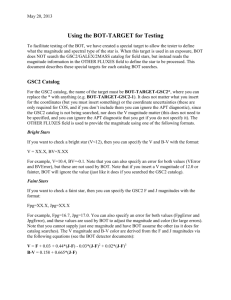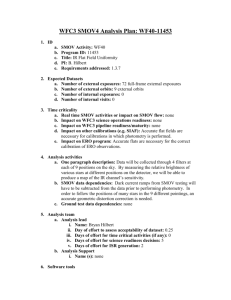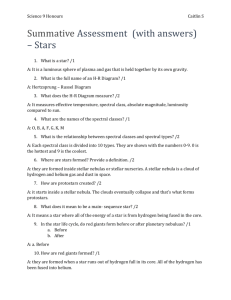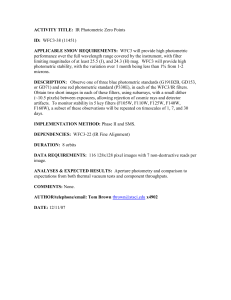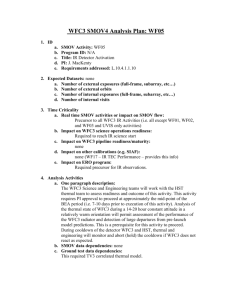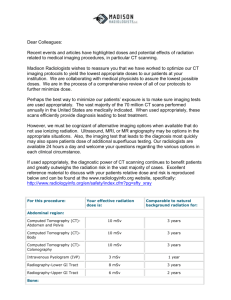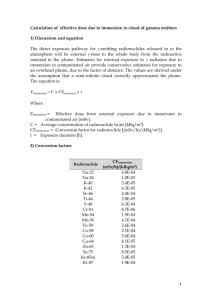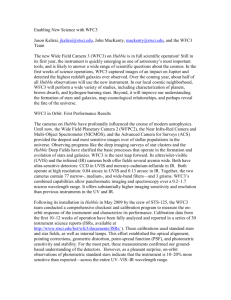Word
advertisement
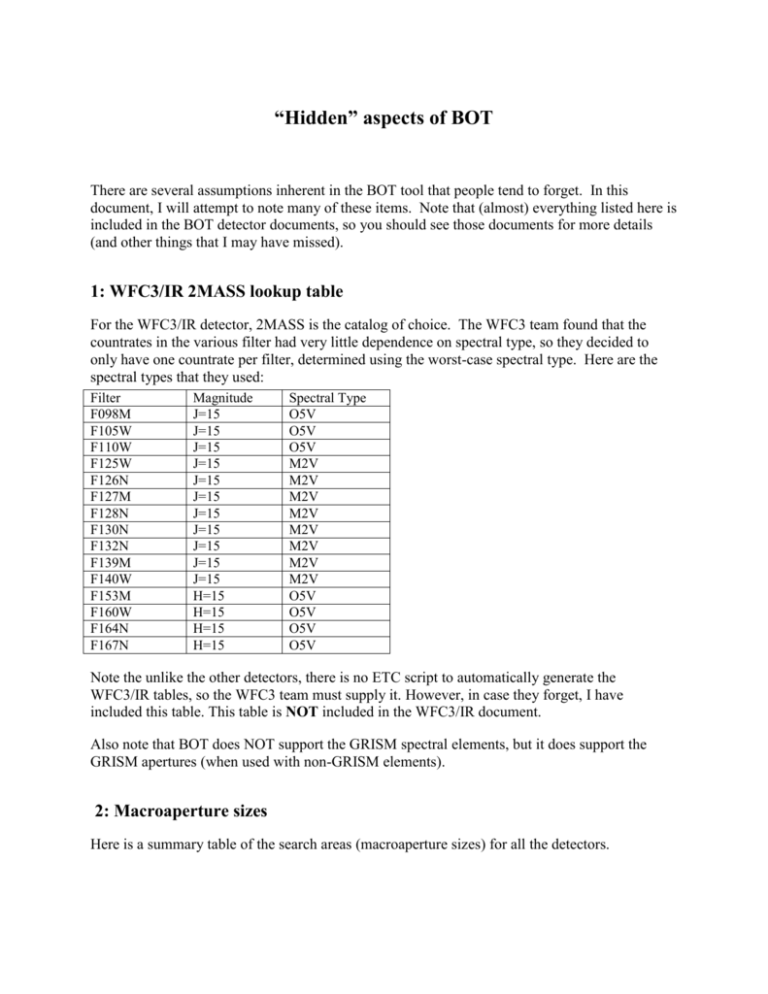
“Hidden” aspects of BOT There are several assumptions inherent in the BOT tool that people tend to forget. In this document, I will attempt to note many of these items. Note that (almost) everything listed here is included in the BOT detector documents, so you should see those documents for more details (and other things that I may have missed). 1: WFC3/IR 2MASS lookup table For the WFC3/IR detector, 2MASS is the catalog of choice. The WFC3 team found that the countrates in the various filter had very little dependence on spectral type, so they decided to only have one countrate per filter, determined using the worst-case spectral type. Here are the spectral types that they used: Filter F098M F105W F110W F125W F126N F127M F128N F130N F132N F139M F140W F153M F160W F164N F167N Magnitude J=15 J=15 J=15 J=15 J=15 J=15 J=15 J=15 J=15 J=15 J=15 H=15 H=15 H=15 H=15 Spectral Type O5V O5V O5V M2V M2V M2V M2V M2V M2V M2V M2V O5V O5V O5V O5V Note the unlike the other detectors, there is no ETC script to automatically generate the WFC3/IR tables, so the WFC3 team must supply it. However, in case they forget, I have included this table. This table is NOT included in the WFC3/IR document. Also note that BOT does NOT support the GRISM spectral elements, but it does support the GRISM apertures (when used with non-GRISM elements). 2: Macroaperture sizes Here is a summary table of the search areas (macroaperture sizes) for all the detectors. Detector STIS/CCD SITS/MAMA ACS/WFC ACS/SBC COS/NUV COS/FUV WFC3/UVIS WFC3/IR Aperture Size 51”x51” 25”x25” 202”x202” 34”x31” 2.5” 2.5” 163”X162” 123”x137” Circular Equivalent 29.1” 17.8” 142.8” 23.0” 115.3” 92.1” Fudge factor 1.0 1.0 1.1 1.2 1.0 1.0 1.1 1.1 BOT Aperture 29.1” 17.8” 159.6” 26.8” 2.5” 2.5” 127.3“ 100.1 Padding Total Search Radius 5 34.1 5 22.8 10 169.6 8.2 35.0 7 8.25 7 8.25 10.4 137.7 10.4 102.5 3: Classification of stars General Since only one color is available for GSC2 objects, BOT assumes all objects are main sequence stars, and that there is no reddening. It is because of these assumptions that BOT should NOT be used for checking the prime target of an observation (as it is unlikely to be a normal main sequence star). For GALEX objects, there is no color information that can be used to derive a spectral type. Therefore all objects are assumed to be the worst case O5V type. For 2MASS, there is no dependence on spectral type (what little dependence there is is included in the lookup table. Special Cases If only 1 GSC2 magnitude is available, BOT assumes the object is a worst case O5V type. The tool then uses J-F=-0.42 (corresponding to an O5V star) and determines V magnitude. This is done to avoid having a lot of “unknown” (unprocessible) objects. All objects with B-V<+0.1 are assumed to be O5V stars. This is due to the near degeneracy in the spectral type-color relation at the blue end. All objects above a Vcrit value (spectral element dependent) are assumed to be O5V stars. This is due to the lack of reddening information. Other Issues For GSC2, the tool will adjust the color by the difference between the nominal error and the actual error (i.e. make the color bluer by [error - 0.28m]) for those cases where the magnitude errors are large. GSC2 objects with only an N magnitude are ignored. These objects are either not real or extremely IR, so not relevant for UV detectors. For COS ACQ/SEARCH mode, the search radius is further expanded to account for the motion of the telescope. For the STIS/FUV, there is a 4 arcsecond offset in the location of the aperture to account for the repeller wire when using the G140L or G140M spectral elements. The tool does not treat the background properly (i.e. remove the background prior to scaling for the object brightness, and then add it back in) for imaging observations; for spectroscopic observations, it does treat the background properly. For cases where the source dominates the sky, the derived count rates will be a good match to the ETC. However, in cases where the sky is comparable or greater than the source, the tool will underestimate the count rate (since it is scaling the background to the faint magnitude of the source). For GALEX, BOT uses the appropriate magnitude for the spectral element selected (e.g. FUV for COS/G140L) if available; if not available, the other magnitude is used. For WFC3/UVIS, one half of the detector (chip 2) has significant higher throughput in the UV (up to approximate 40%), while the other has slightly higher (~10%) throughput in the optical. For any given target, BOT takes the larger of the two count rates.

